Access to high-speed internet at home is practically a necessity these days. That need became even more apparent during the COVID-19 lockdowns, which forced families to work and learn from home. While most children have gone back to in-person learning, many adults have remained in work-from-home mode with no plans to change. Throw in our copious consumption of streaming TV services, large downloads for operating system updates, PC and console games, apps, etc., and it’s clear that having a fast and stable internet connection is a high priority for many people.
Unfortunately, for many Americans, current choices in high-speed internet carriers for your home are often extremely limited.
Why I Decided to Drop Spectrum Internet
I’ve been a long-time Spectrum Internet customer, even when it was previously known as Time Warner Cable. But having Spectrum internet isn’t by choice; it has long been the only option I have living in rural Garner, NC, located just southeast of Raleigh. While AT&T Fiber and Google Fiber are available within 20 miles of my address, neither services my neighborhood. Given the regional internet monopolies around the country, Spectrum is still my only choice for high-speed cable/fiber internet.
But why did I decide to give Spectrum the boot? I was sick of having to jump through hoops every year to keep my current service at a reasonable price. I’ve been paying $69.99 for 400/20 internet, but every year Spectrum jacks the rate to $84.99. Then I have to call their customer service line and waste 45 minutes of my day to get them to reduce the rate back to $69.99. Sure, it’s a once-a-year thing, but I’ve been looking for an out.
A friend, who also just so happens to be stuck with Spectrum, asked me about other ISP options when it dawned on me that T-Mobile offers Home Internet at $50/month. I asked her to see if her address was eligible for service, and it was. She decided to take T-Mobile up on their two-week free trial offer and signed up for service.
At that moment, I asked myself: Could I also potentially ditch spectrum and go with a 5G wireless service as my primary link for home internet?
What is T-Mobile Home Internet?
T-Mobile Home Internet provides internet service to your home using a 5G gateway using T-Mobile’s cellular network. The 5G gateway contains a 4G/5G modem that connects to T-Mobile’s cellular network and combines a WiFi 6 router for linking up all your devices. T-Mobile only offers its Home Internet service in areas with excellent coverage (for obvious reasons). And even then, not all addresses are served, based on network capacity.
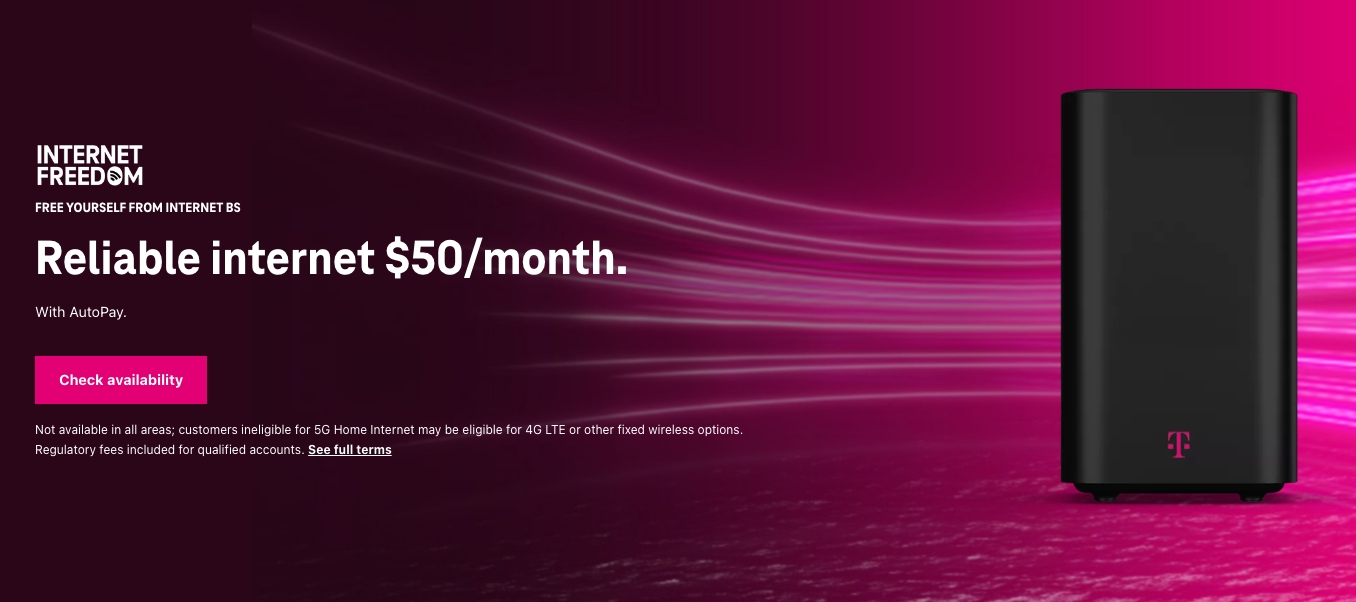
T-Mobile Home Internet costs $50 per month when you sign up for Autopay ($55/month without Autopay), including all taxes and fees. If you are an existing T-Mobile Magenta Max mobile customer, your monthly price drops to just $30/month with Autopay. The 5G gateway is provided free, so there is no monthly equipment (modem) fee to pay (as is often the case with fixed-line providers like Spectrum and Comcast), and there are no long-term contracts to sign.
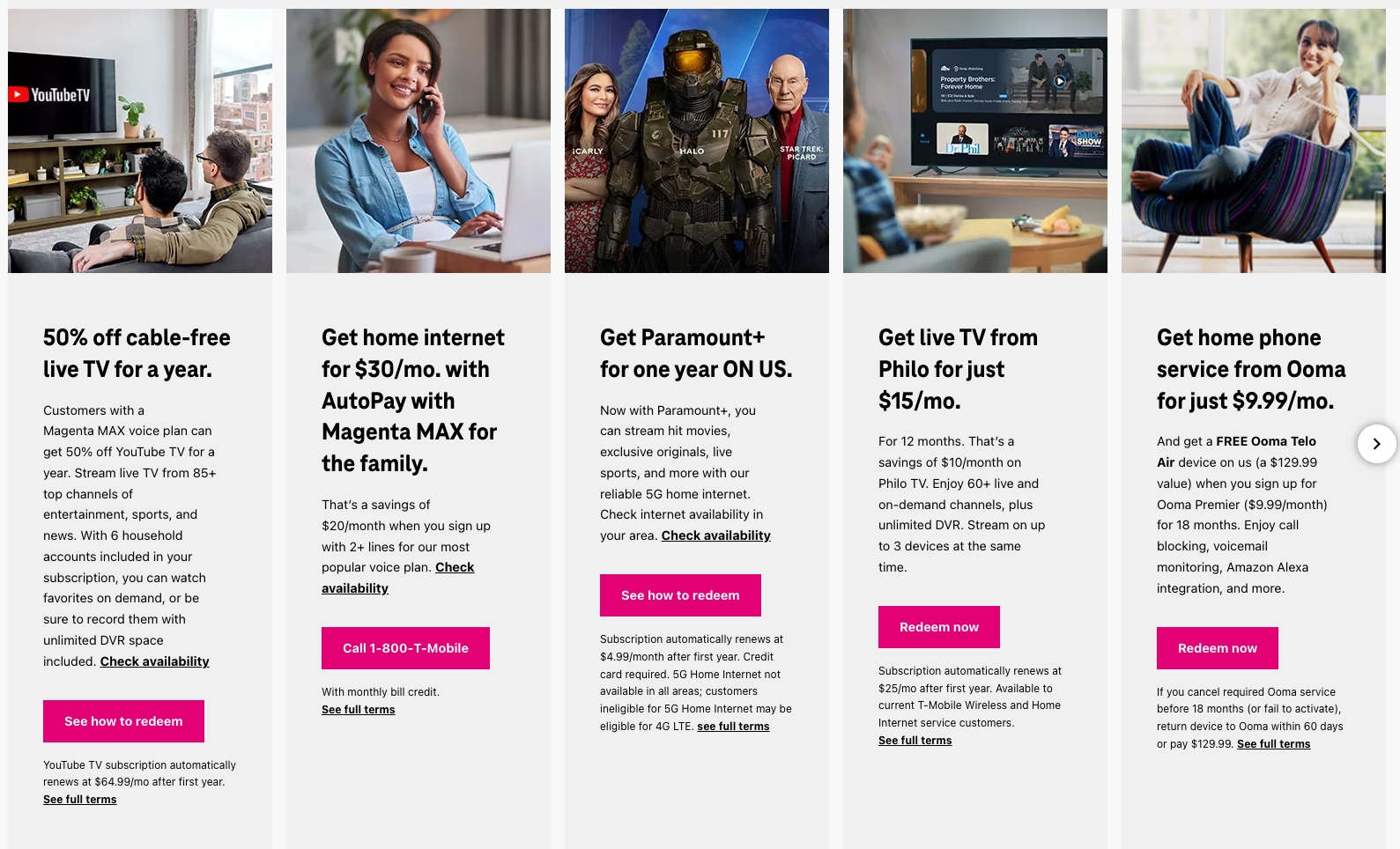
The goodies don’t stop there. T-Mobile currently offers home internet customers 50% off YouTube TV for a year, Paramount+ free for a year, and Philo TV for $15/month (versus the standard rate of $25/month). If that wasn’t enough, get new signups Amazon Echo Show 5 (second generation) for free (opens in new tab).
According to the company, you can expect “typical” download speeds of between 33 Mbps to 182 Mbps and upload speeds ranging from 6 Mbps to 23 Mbps. However, as you see below, actual speeds can be much higher, rivaling legacy cable companies. The other big thing that most people would probably want to know is the current situation with data caps, given that this service works on T-Mobile’s cellular network. Surprisingly, the answer is that there are no data caps. While Comcast and Spectrum have implemented data caps on their fixed-line customers in multiple US markets, T-Mobile thankfully eschews the practice–at least for now.
As for overall performance, T-Mobile provides the following disclaimer:
Speeds can vary depending on location, signal strength and availability, time of day, and other factors. Our speed projections are based on our analysis of internal and third-party data.
T-Mobile says its home internet service is available to 30 million Americans.
Signing up for T-Mobile Home Internet
Getting signed up for the service was relatively easy. First, I clicked this T-Mobile link (opens in new tab) to enter my phone number and see if my home address was eligible. Once eligibility was confirmed, I was able to chat with a representative who asked me a few questions and sent me several secure links to enter my name, address, billing information, and social security number (to perform a credit check for the new hardware that would be sent to me).
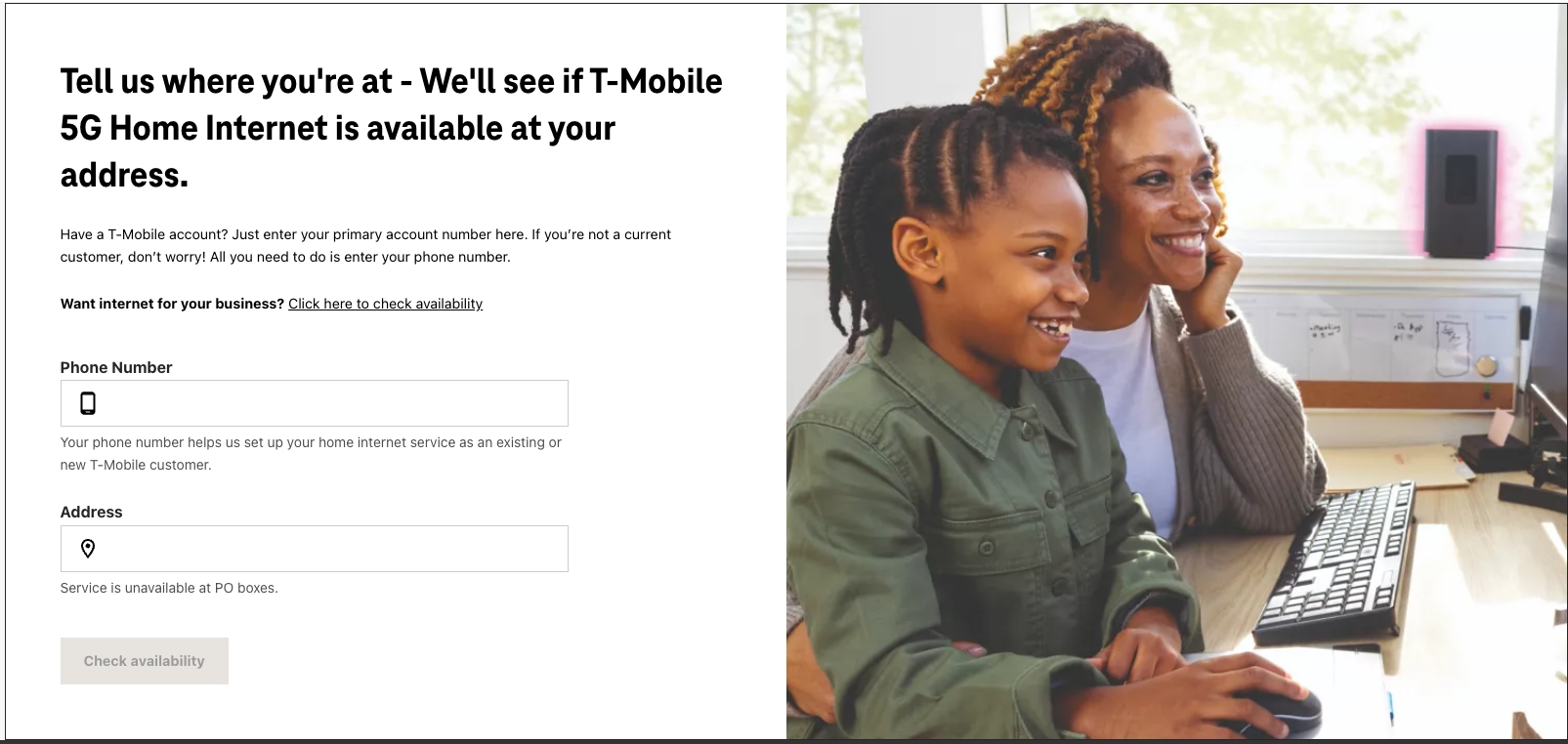
After about 10 minutes, the signup process was complete, and I was informed that the 5G gateway would arrive within two business days. On the second business day, the 5G gateway arrived as promised via UPS, and I was eager to test it out.
First Impressions and Setup
After removing the 5G gateway from the box, I was struck by its size. It measures 8.5 inches tall and is silver in color. It’s shaped like a cylinder, reminding me of the first-generation Amazon Echo. On the back of the device, you’ll find a power port, a power button, a reset button, a USB-C port (which worked just fine charging my smartphone), a phone jack and two Ethernet ports. Unfortunately, compared to modern wireless routers, T-Mobile’s 5G gateway is lacking in port selection. So you may want to pick up one of the best network switches we’ve tested.
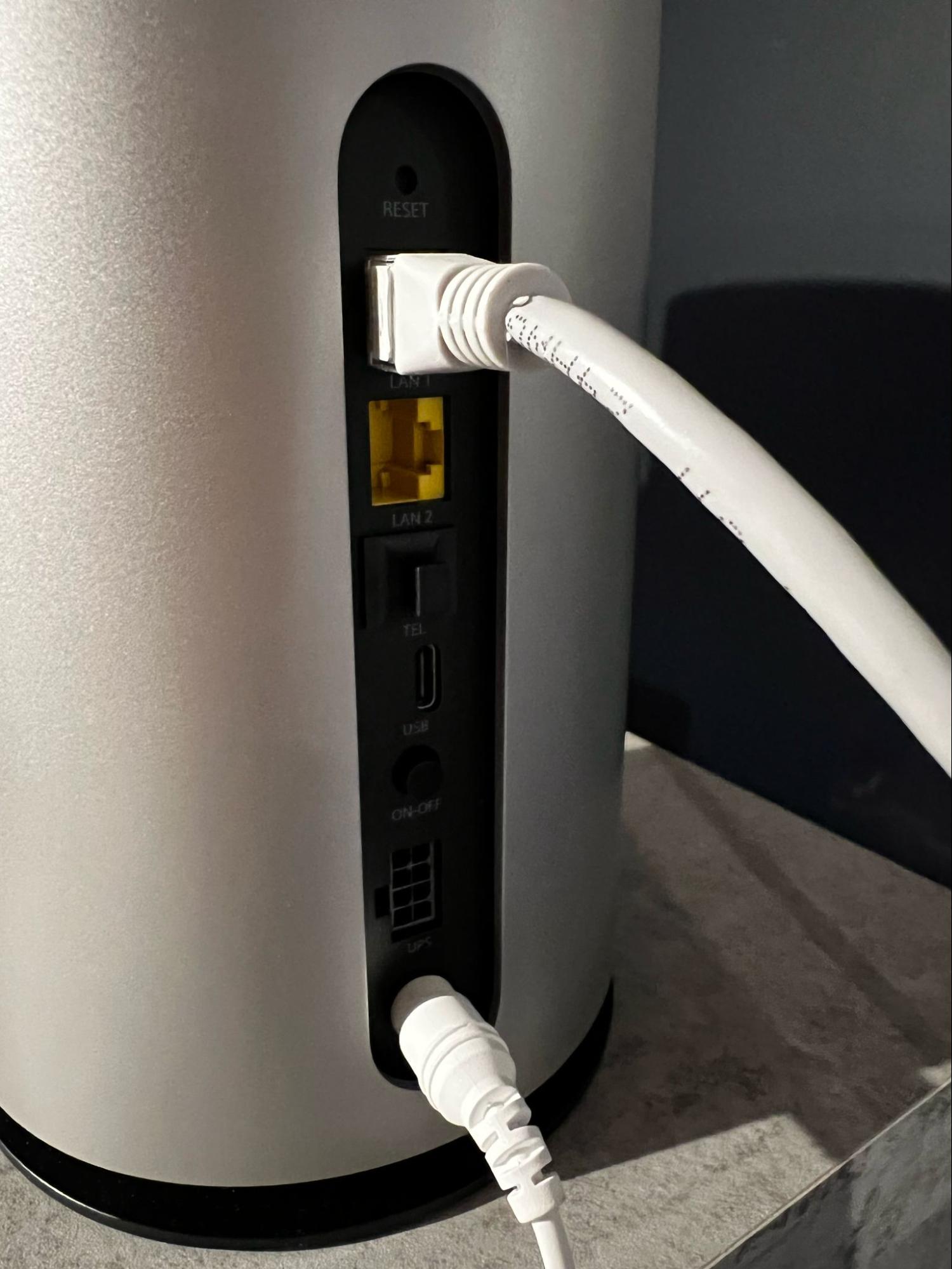
You’ll find a small, circular touch display on the top of the device. You can swipe across the screen to see your current signal strength, messages from T-Mobile, the number of connected devices, and battery status. Yes, the 5G gateway has an integrated battery, and it will continue to function if the power plug is pulled (this feature should come in handy during power outages).
To set up the gateway, you must first download the T-Mobile Internet app and install it on a smartphone. I then plugged the gateway into the wall in my office on the second floor of my house and powered it up. It booted up, performed a quick software update, then confirmed signal strength of three out of five bars. The app itself is very basic, with few controls for the router. You can see network status, signal strength, connected devices, change the SSID/passcode, and adjust the frequency bands. That’s about it. There are no parental controls, advanced wireless controls, access controls, MAC filtering, or anything like that. This is just a barebones setup that should work fine for most households. Power users will likely want to look elsewhere or simply connect their existing router to the 5G gateway.
At first, I was concerned about the signal strength, as I had the gateway situated on top of a bookshelf next to my cable modem, which isn’t near a window (T-Mobile suggests placing the gateway near a window for the best signal ). I then stuck it near a window in my office and was greeted with the same three bars. I next took the 5G gateway downstairs on the opposite side of the house and placed it near a window. I still obtained three bars. At that point, I decided to just put it in the original location near the cable modem and proceed with the setup. After the initial setup, the signal strength has hovered between three bars and four bars.
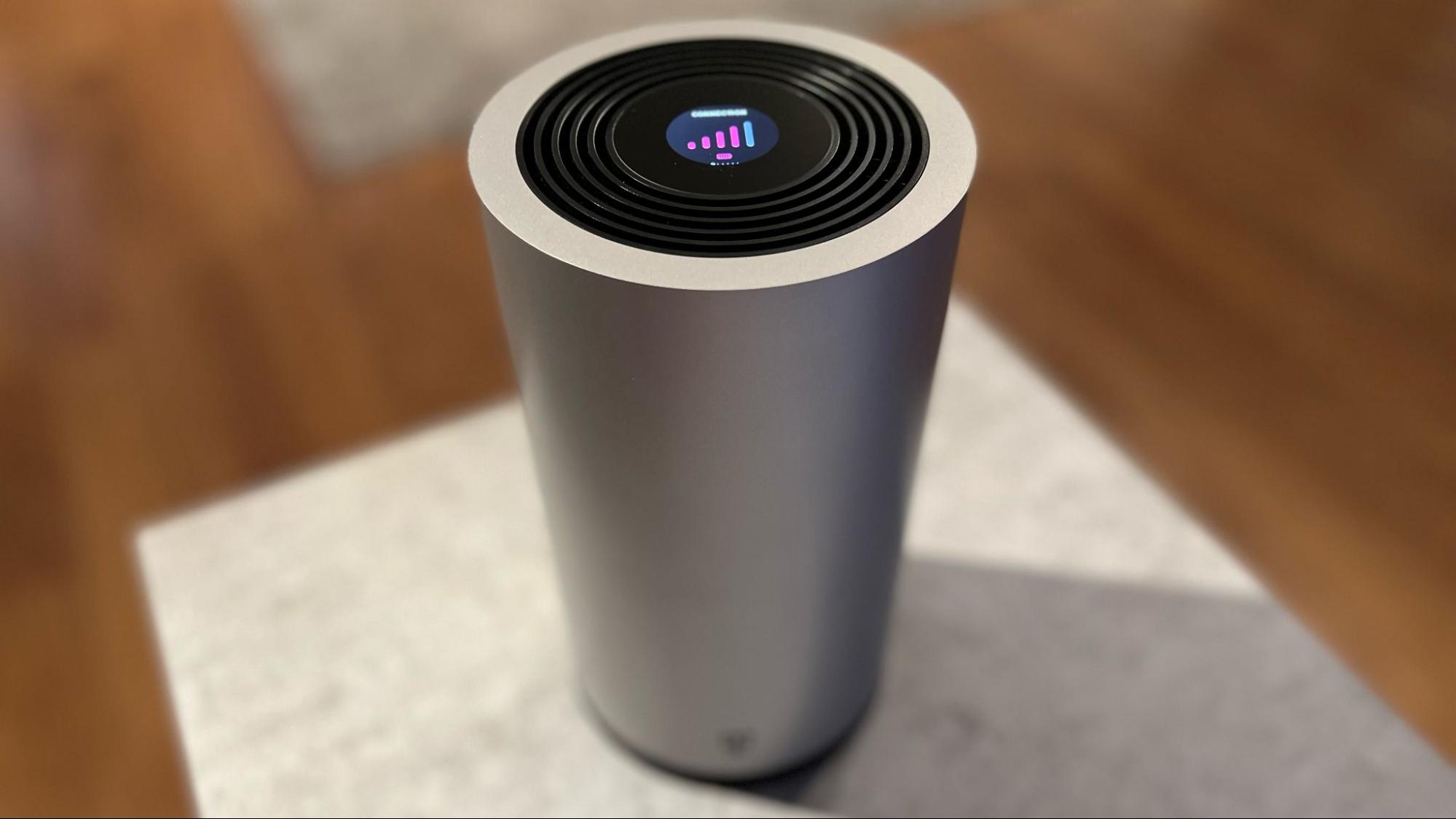
Upon opening the T-Mobile Internet app, I was asked to scan the QR code on the bottom of the gateway to expedite setup. This prepopulated the SSID and passcode, then began communicating with the gateway and the T-Mobile network for activation. After about 30 seconds, the setup process was complete, and I was ready to go.
At any given time, we have 40+ Wi-Fi devices connected to our wireless router (a first-generation Netgear Orbi RBR50 Wi-Fi 5 mesh router with two satellites). We’re talking multiple laptops, smartphones, tablets, Smart TVs, Amazon Echo speakers, and about a dozen Kasa smart light switches, light bulbs and power outlets. Given the sheer number of Wi-Fi devices in my home, I opted to piggyback my Orbi off the 5G gateway to make things simple (granted, I could have just changed the SSID and password on the 5G gateway to match my Orbi, but I didn’t want to drop coverage that my router and two satellites provide through the whole house and outdoors).
Testing Performance
I first connected just my iPhone to the 5G gateway over Wi-Fi and performed a Speedtest. To my amazement, I registered download speeds exceeding 470 Mbps, while uploads came in at nearly 72 Mbps.
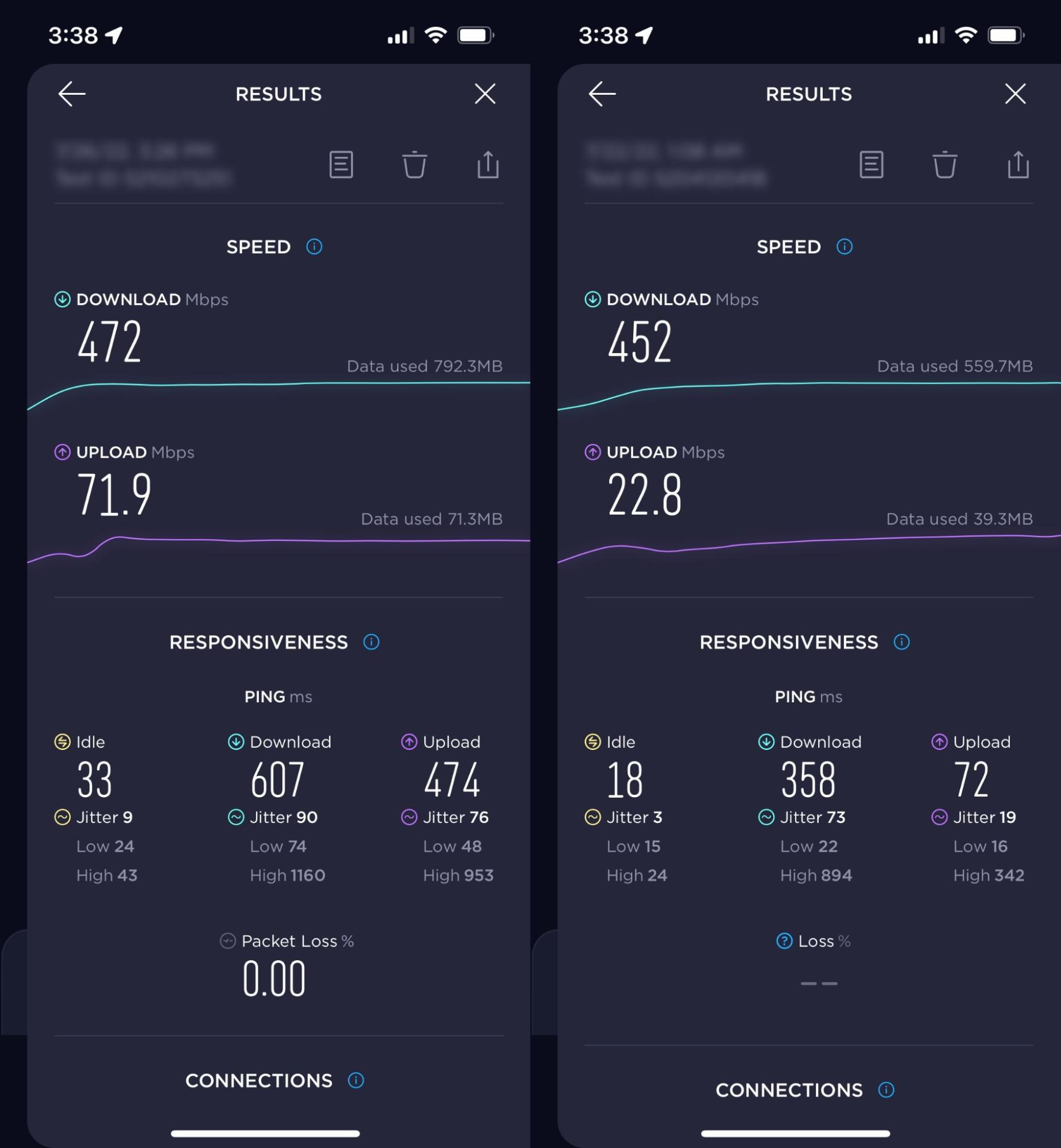
For reference, my Spectrum internet connection gives me 430 Mbps to 450 Mbps and tops out at around 21 Mbps for uploads. Subsequent tests have shown the 5G gateway hitting peak download speeds of 557.37 Mbps from my MacBook Pro (connected directly to the 5G gateway) around 3 pm, which is unheard of for home internet out here in the sticks.
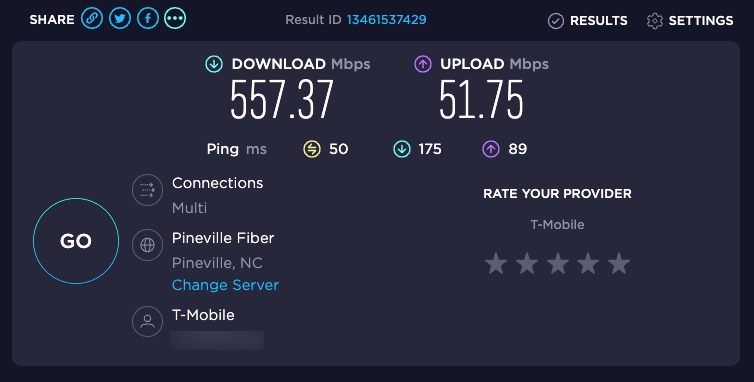
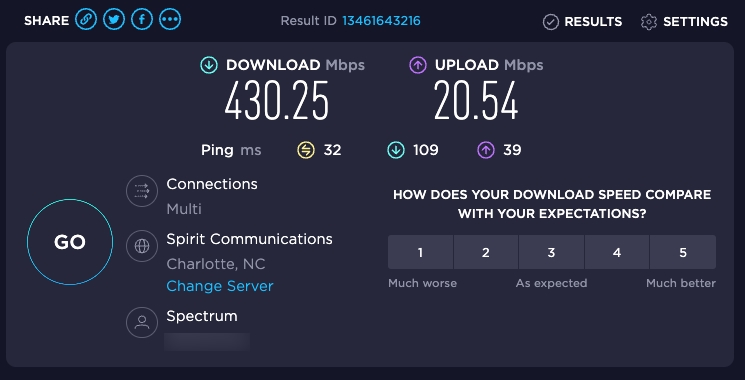
For a worst-case scenario, I tested again around 9:00 pm ET, and the 5G gateway’s speeds dropped to around 400 Mbps for downloads and 40 Mbps for uploads. That’s a steep drop-off, but still, plenty of throughput for our needs.
I next performed the same tests with my Orbi router plugged in via one of the 5G gateway’s two Ethernet ports. The download and upload speeds were unaffected, so I stuck with that setup.
I’m not a big gamer, so I’m primarily concerned with having a fast and stable internet connection 24-7-365. In the days that I’ve been testing T-Mobile’s Home Internet service, it’s been flawless. I haven’t experienced any service interruptions or significant speed shortfalls. The 5G gateway has remained slightly lukewarm to the touch, which is cooler than the toasty Arris Surfboard SB6183 cable modem I’ve been using for years.
The 5G hotspot can simultaneously handle multiple Smart TVs streaming, my daily conference calls, my large file downloads, and just about anything else I throw at it.
Wrap-up
I went into this test a little skeptical of using a cellular-based internet service for my home internet, but those worries never came to fruition. Signing up for T-Mobile Home Internet was easy, the setup process with the app was minimalistic with little room for error, and the actual internet service has been rock solid. Throw in the fact that I’m saving $20 per month ($240/year), and the switch has been a no-brainer for our family.
About the hardest part of this whole process will likely be the phone call that I will need to make to Spectrum’s customer retention department to tell them that I’m canceling my existing service.
Note: As with all of our op-eds, the opinions expressed here belong to the writer alone and not Tom’s Hardware as a team.